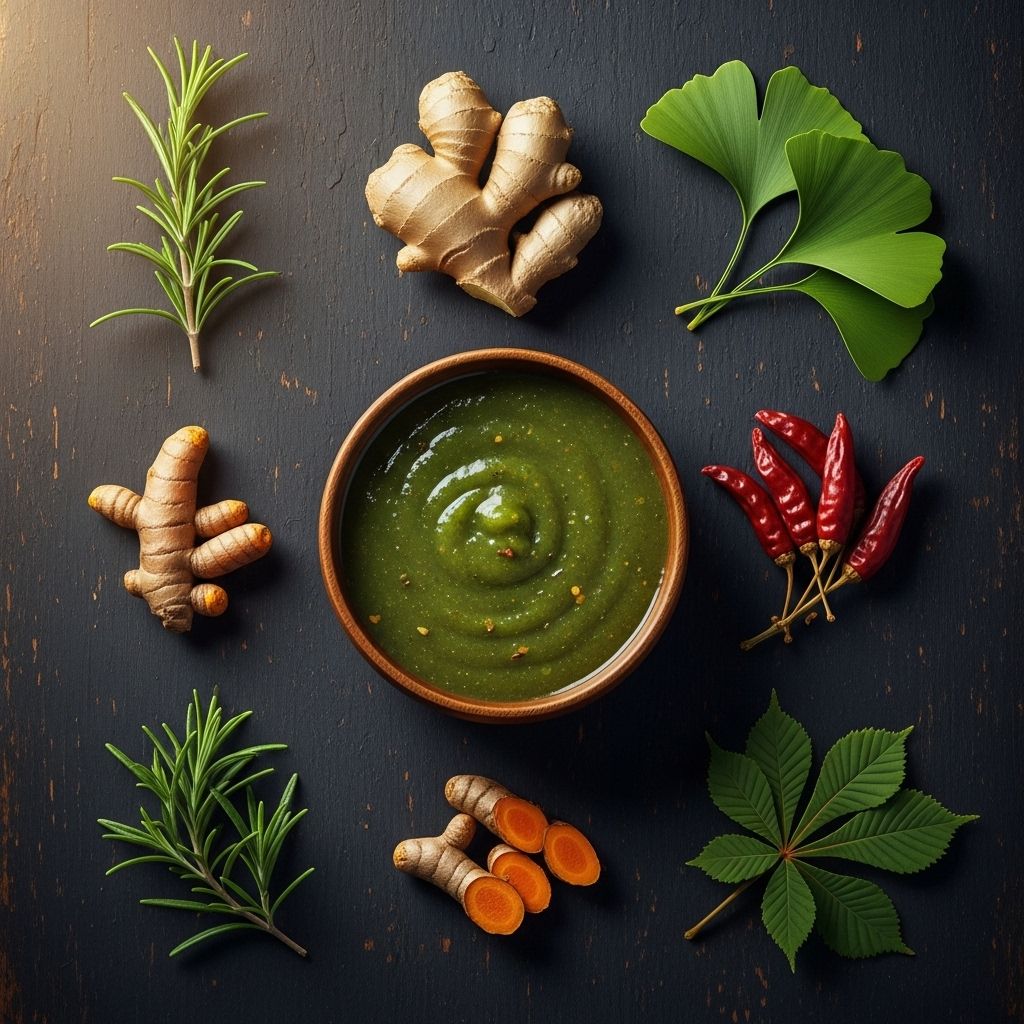Traditional Herbal Liniments for Enhancing Systemic Circulation
Time-tested plant extracts bring deep warmth and help relieve muscle tension.

Table of Contents
2. Understanding Herbal Liniments
3. Herbal Liniments for Circulation
4. Herbs Used in Liniments for Circulation
5. Historical Use of Liniments
6. Common Herbal Liniments for Circulation and Pain Relief
7. Application and Precautions
Introduction
Herbal liniments have been used for centuries across various cultures as effective topical applications for relieving pain, tension, swelling, and bruising. These liquid botanical preparations are known for their rapid action, especially when applied topically to improve circulation and reduce discomfort. In this article, we will delve into the world of traditional herbal liniments, focusing on their role in enhancing systemic circulation and providing relief from pain and inflammation.
Understanding Herbal Liniments
Herbal liniments are liquid preparations made from herbs and other plant materials. They are often alcohol or witch hazel-based, which helps in delivering the active constituents of the herbs directly into the skin. Liniments act as:
- Counterirritants: Herbs like capsicum create mild irritation on the skin to distract from deeper aches and pains.
- Anti-inflammatories: Plants such as arnica help reduce swelling and inflammation.
- Rubefacients: Peppermint and similar herbs stimulate local circulation, bringing warmth to the area and easing discomfort.
Herbal Liniments for Circulation
Liniments that enhance circulation are particularly beneficial for improving blood flow and reducing muscle soreness. Herbs like peppermint and eucalyptus are commonly used for their rubefacient properties, which help in warming the skin and improving local circulation.
Herbs Used in Liniments for Circulation
Several herbs are utilized in liniments to enhance circulation and relieve pain:
- Ginger: Known for its warming properties, ginger helps in maintaining healthy circulation and is a common ingredient in many liniments.
- Turmeric: Contains curcumin, which has anti-inflammatory properties beneficial for circulation.
- Black Pepper: Piperine in black pepper expands blood vessels, aiding circulation.
- Pippali: Encourages vasodilation, enhancing blood flow.
- Ceylon Cinnamon: Acts as a circulatory stimulant by dilating blood vessels.
- Gotu Kola: Supports healthy circulation in the legs and improves vascular health.
Historical Use of Liniments
Liniments have a rich history across cultures:- Traditional Chinese Medicine: Employed liniments known as Dit Da Jow for centuries, particularly among martial artists to accelerate healing.- Western Folk Medicine: Herbal liniments were staples in farmhouse first aid kits, treating sprains, bruises, and insect bites.- Native American Herbalism: Utilized plants like arnica, sagebrush, and yarrow for quick pain relief.
Common Herbal Liniments for Circulation and Pain Relief
Some common formulations include:
| Herb/Oil | Benefit |
|---|---|
| Giloy (Tinospora cordifolia) | Pain-relieving, anti-inflammatory, and immune-stimulating properties. |
| Eucalyptus Oil | Rubefacient and anti-inflammatory effects. |
| Peppermint Oil | Improves circulation and acts as a counterirritant. |
| Camphor | Provides relief from pain and stiffness. |
Application and Precautions
When applying herbal liniments:
- Testing: Always perform a patch test to check for any allergic reactions.
- Concentration: Follow the recommended concentration of active ingredients to avoid irritation.
- External Use: Ensure liniments are used externally and avoid applying them on broken skin or near the eyes.
Frequently Asked Questions
Q: Can herbal liniments be used for systemic circulation issues?
A: While herbal liniments are primarily topical, they can help improve local circulation. However, systemic circulation issues may require more comprehensive treatments.
Q: Are herbal liniments safe for everyone?
A: Generally safe, but it is crucial to perform a patch test before use and avoid applying on sensitive areas. Individuals with allergies or certain health conditions should consult a healthcare provider.
Q: How long do herbal liniments take to show results?
A: Results can vary, but many users experience relief within minutes to hours after application.
References
- https://www.organicindiausa.com/blog/herbs-for-circulation/
- https://ecozoica.com/2025/07/30/herbal-liniments-guide/
- https://pmc.ncbi.nlm.nih.gov/articles/PMC3914464/
- https://ijirt.org/publishedpaper/IJIRT179438_PAPER.pdf
- https://www.shaolinarts.org/seven-powerful-herbal-liniments-to-aid-training-and-healing/
- https://www.modernherbshop.com/Blood_and_Circulation_s/77.htm
- https://pmc.ncbi.nlm.nih.gov/articles/PMC4405845/
Read full bio of Sneha Tete












